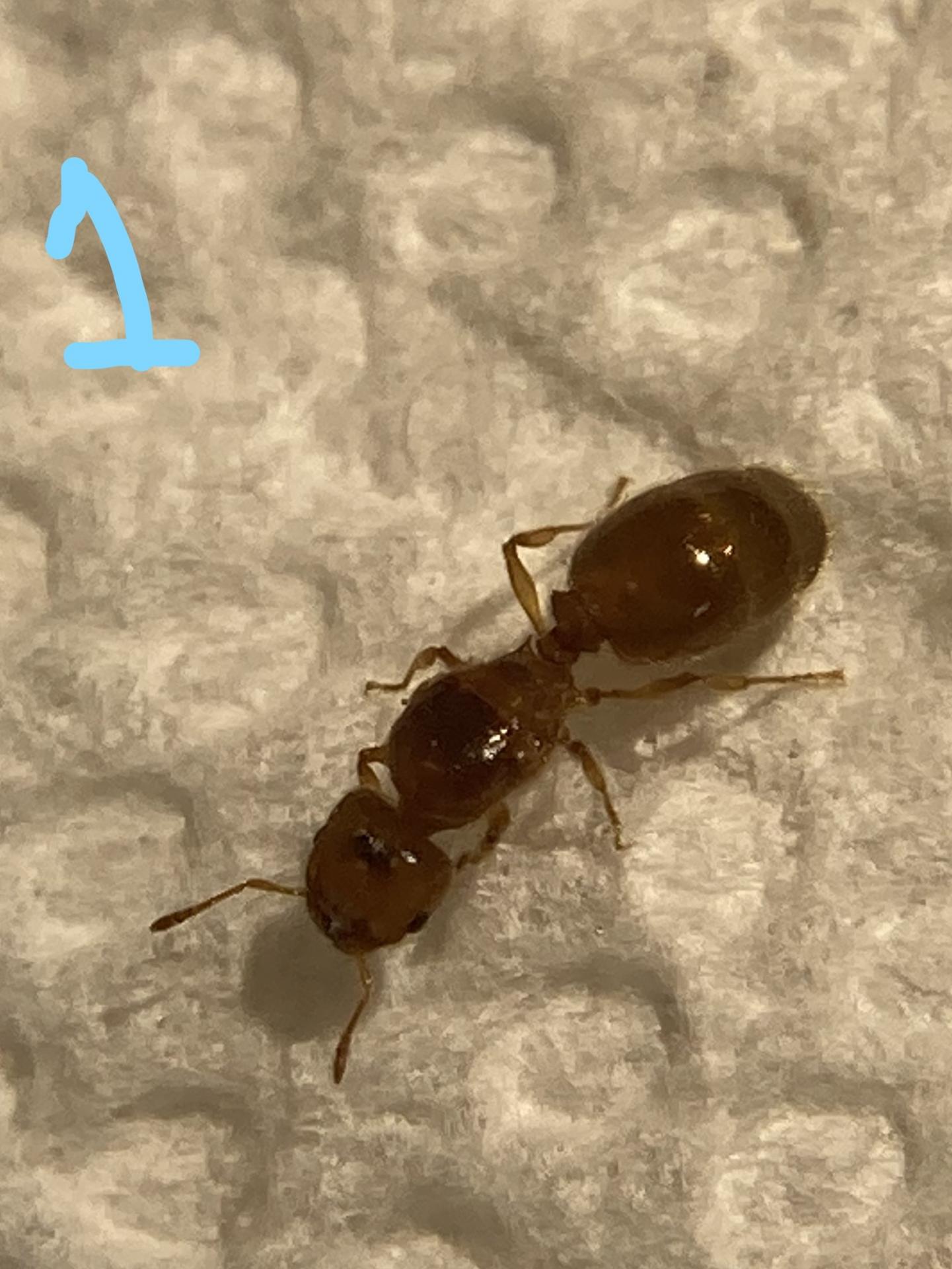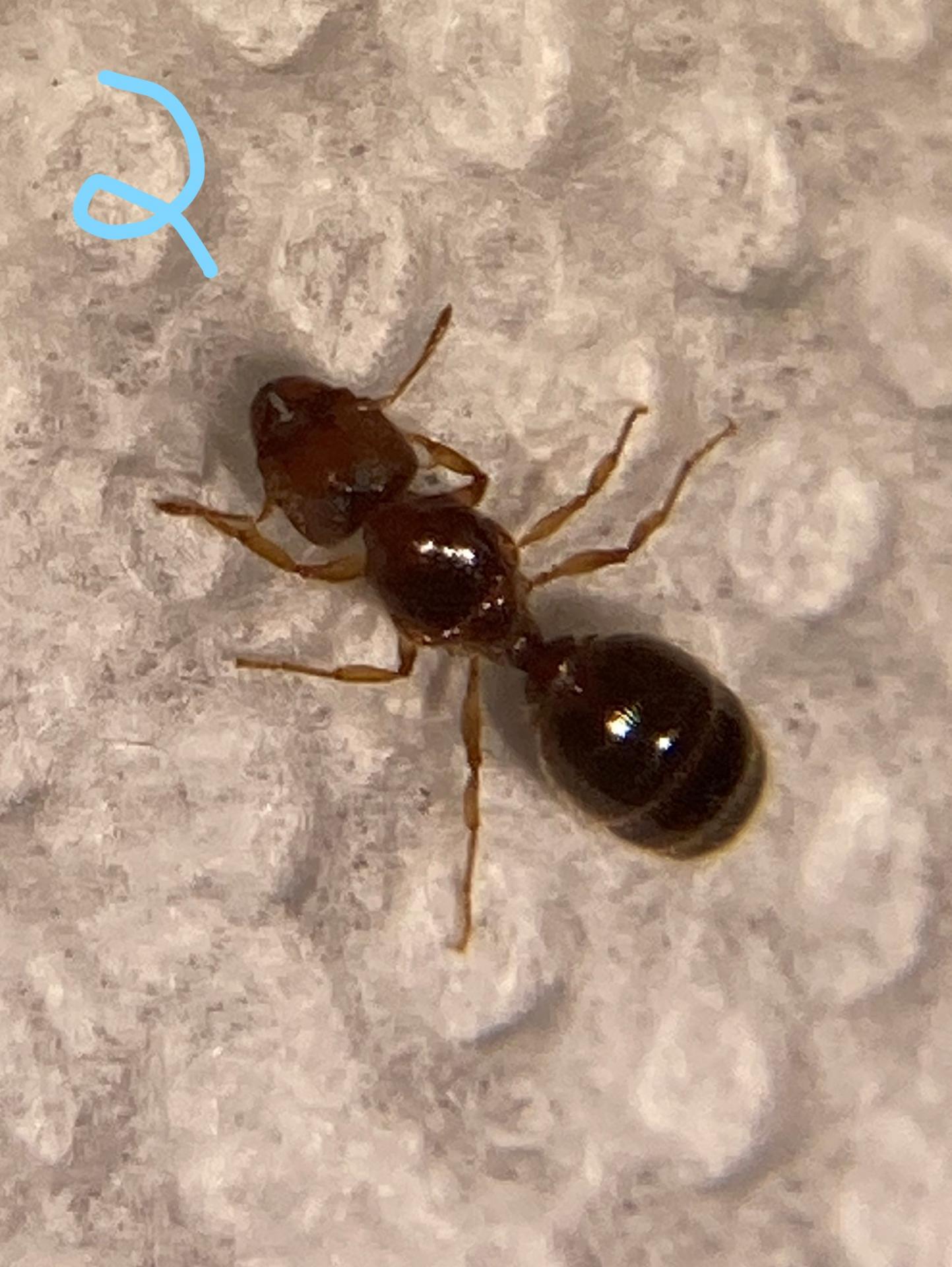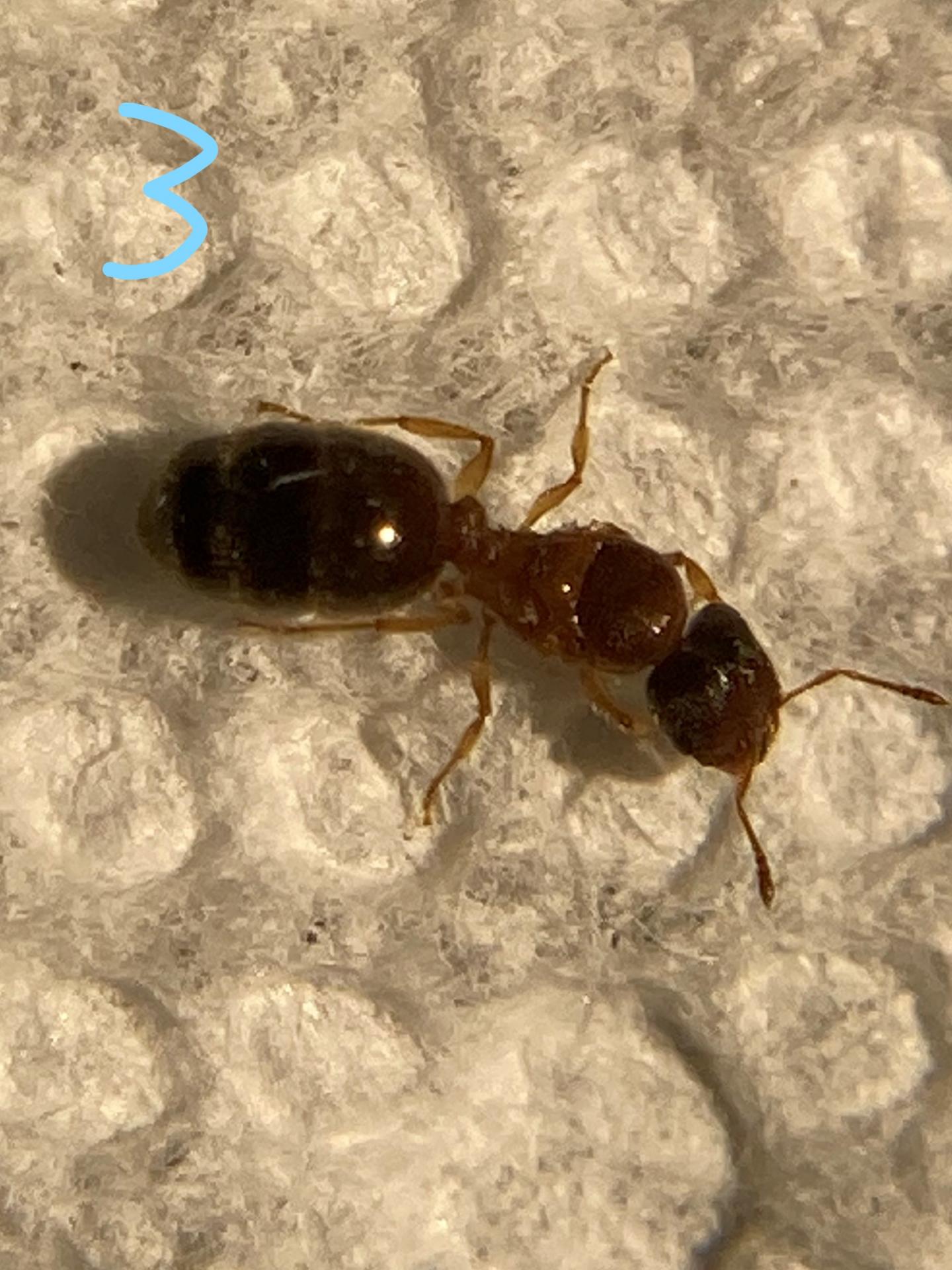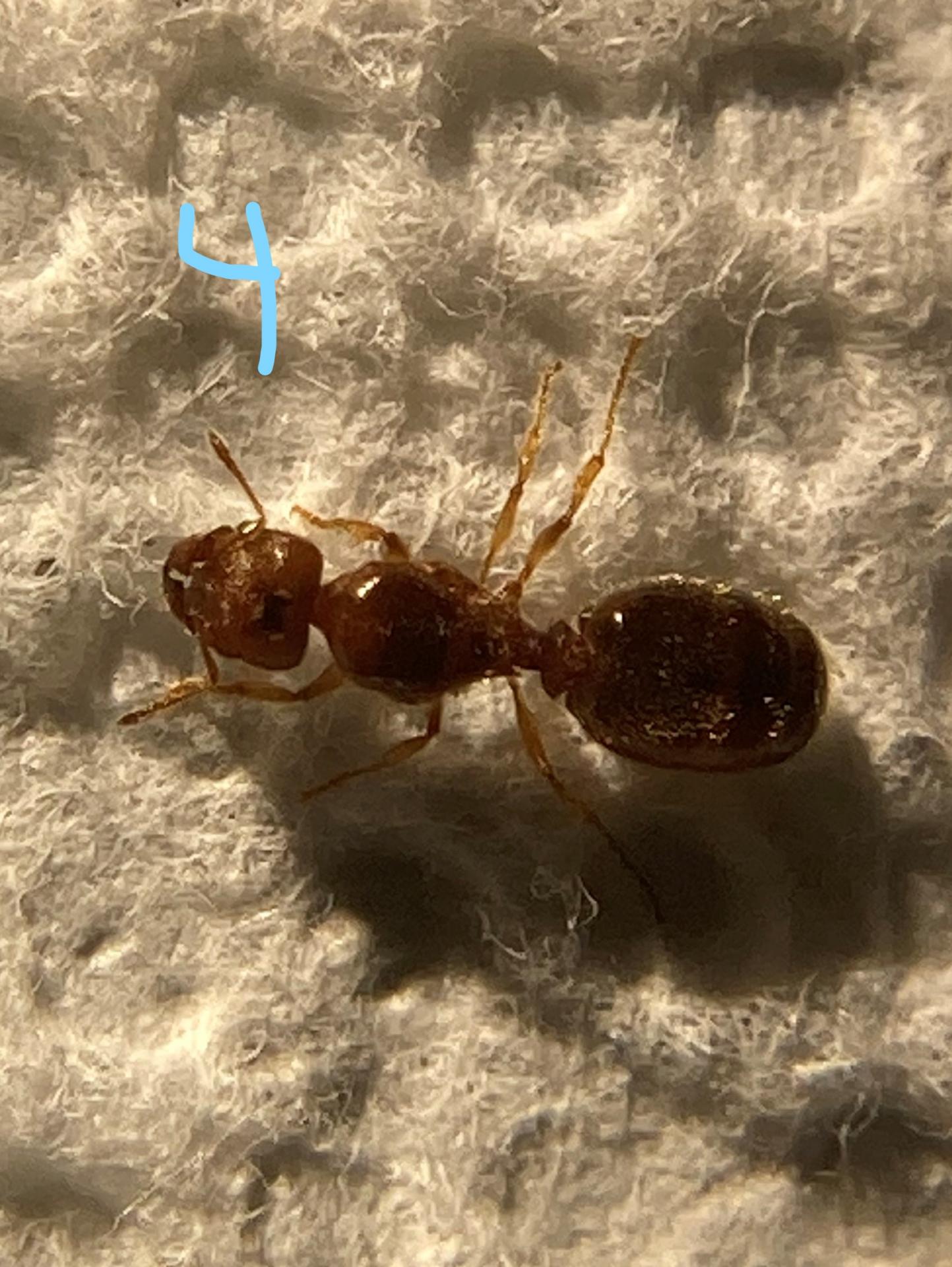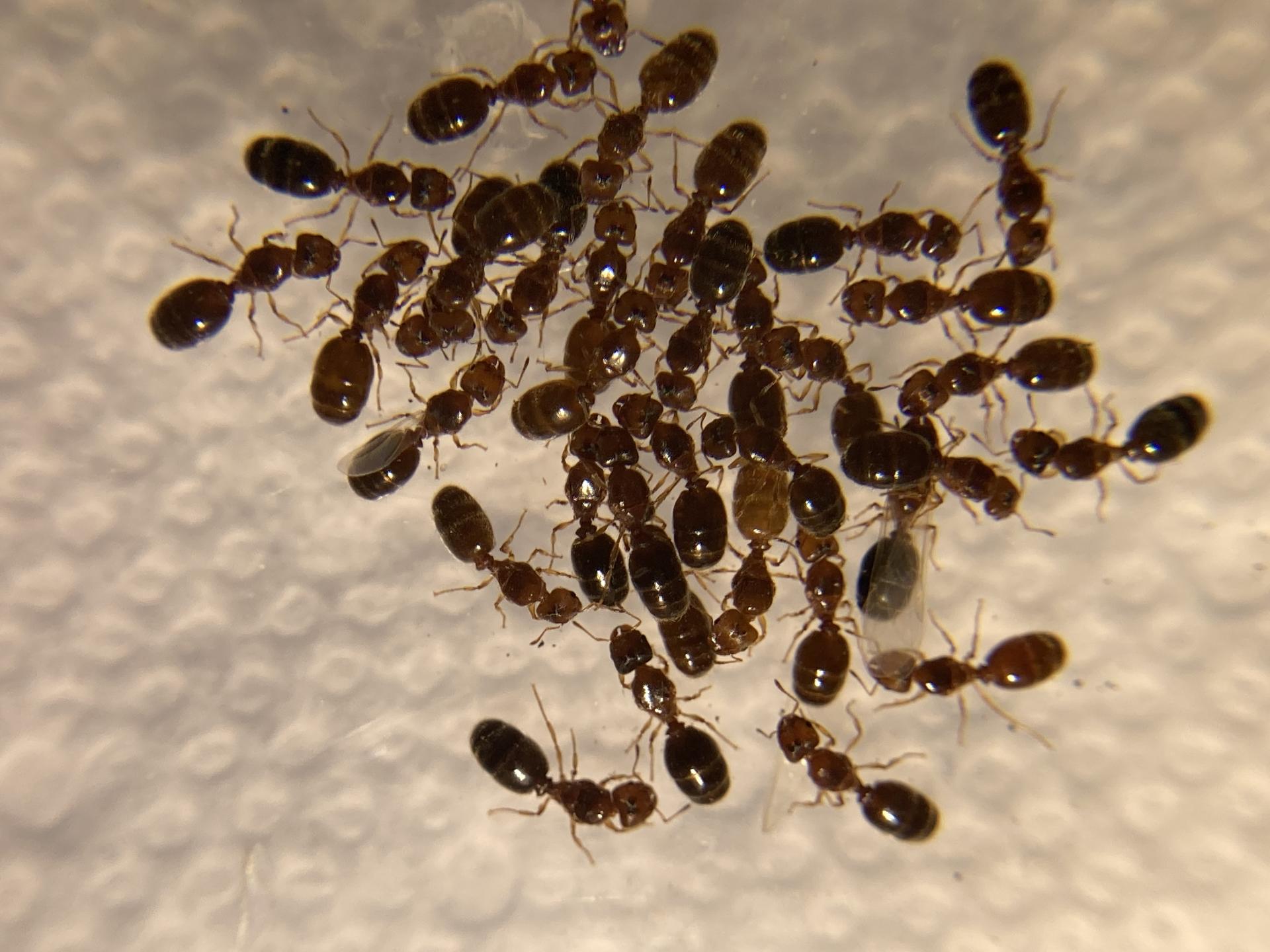1. Tupelo, MS
2. 2022/06/11
3. Backyard
4. NA
5. Various
6. N/A
7. N/A
8. Blacklighting
9. 2022/06/11, I have what I believe to be multiple species of Pheidole. Trying to verify which species is which so I can collect more of favorite. There are SOOOOO MANYYY.
I have numbers each picture of 4 different ants that may be difference species of P.
Adding another picture of a mass pile section of what I collected. Working on sorting.
Edited by DarkCerebral, June 11 2022 - 7:40 PM.





